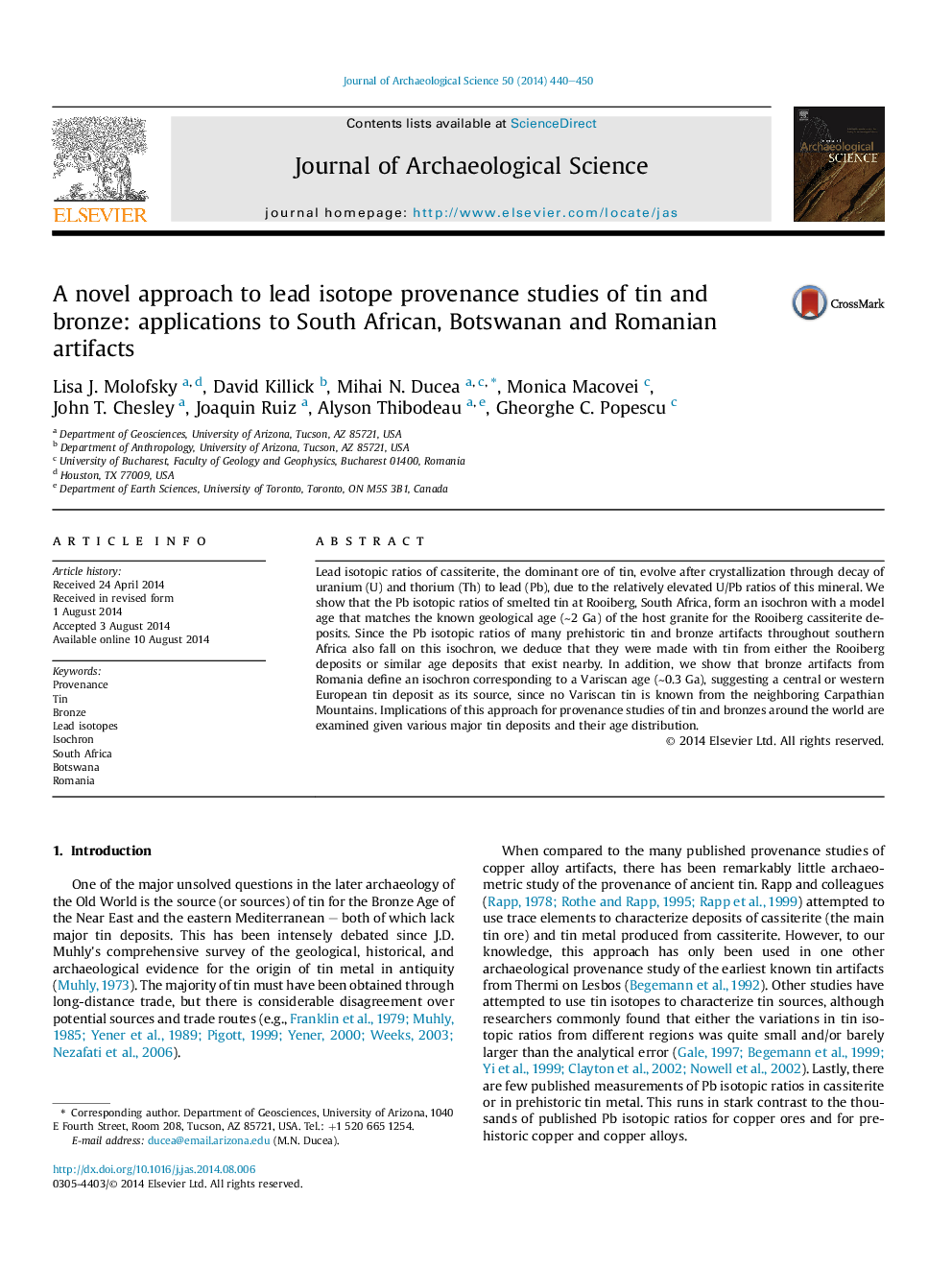| Article ID | Journal | Published Year | Pages | File Type |
|---|---|---|---|---|
| 7443051 | Journal of Archaeological Science | 2014 | 11 Pages |
Abstract
Lead isotopic ratios of cassiterite, the dominant ore of tin, evolve after crystallization through decay of uranium (U) and thorium (Th) to lead (Pb), due to the relatively elevated U/Pb ratios of this mineral. We show that the Pb isotopic ratios of smelted tin at Rooiberg, South Africa, form an isochron with a model age that matches the known geological age (â¼2Â Ga) of the host granite for the Rooiberg cassiterite deposits. Since the Pb isotopic ratios of many prehistoric tin and bronze artifacts throughout southern Africa also fall on this isochron, we deduce that they were made with tin from either the Rooiberg deposits or similar age deposits that exist nearby. In addition, we show that bronze artifacts from Romania define an isochron corresponding to a Variscan age (â¼0.3Â Ga), suggesting a central or western European tin deposit as its source, since no Variscan tin is known from the neighboring Carpathian Mountains. Implications of this approach for provenance studies of tin and bronzes around the world are examined given various major tin deposits and their age distribution.
Related Topics
Physical Sciences and Engineering
Materials Science
Materials Science (General)
Authors
Lisa J. Molofsky, David Killick, Mihai N. Ducea, Monica Macovei, John T. Chesley, Joaquin Ruiz, Alyson Thibodeau, Gheorghe C. Popescu,
